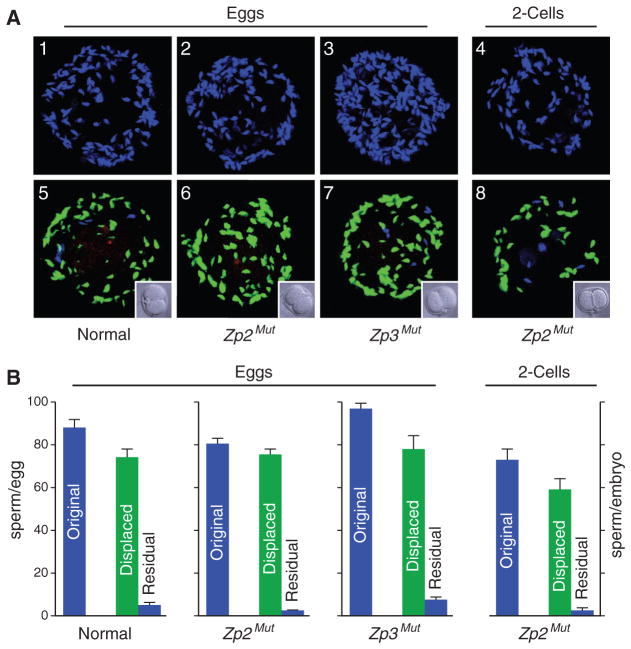Fig. 3.
Reversible sperm binding. (A) Normal (1), Zp2Mut (2), and Zp3Mut (3) eggs and Zp2Mut embryos (4) were incubated with capacitated sperm for 1 hour and stained with Hoechst before imaging by confocal microscopy. After a brief rinse, capacitated Acr3-EGFP sperm [5 × 105 ml−1 of human tubal fluid (HTF)] were added and incubated for an additional 1 hour. After washing with normal two-cell embryo controls (insets) to remove nonadherent sperm, eggs and embryos were stained with Alexa 568–SBTI before imaging by confocal microscopy (5 to 8). Acrosome-reacted and -intact sperm were labeled with Alexa 568 and EGFP, respectively. Images were modified in Adobe Photoshop to remove nuclear staining from EGFP-positive sperm; thus, Hoechst-positive, EGFP-negative sperm reflect those that were not displaced by EGFP sperm. (B) Quantification of the number of sperm bound to eggs and two-cell embryos before (blue bars labeled original) and after (green bars labeled displaced) the addition of Acr3-EGFP sperm. Residual sperm (blue bars) reflect those not displaced by Acr3-EGFP after 1 hour of incubation and removal of nonadherent sperm.

